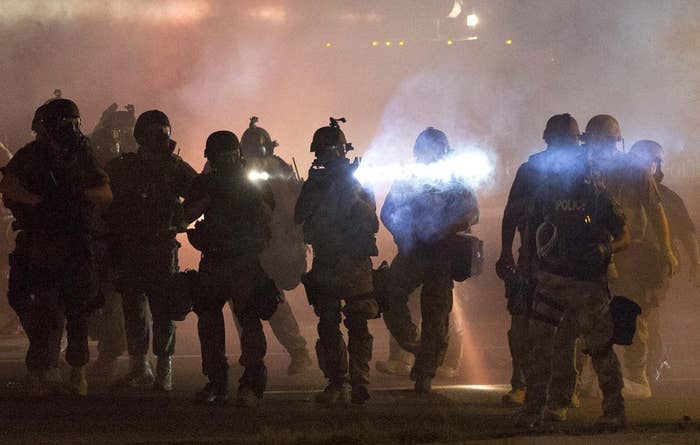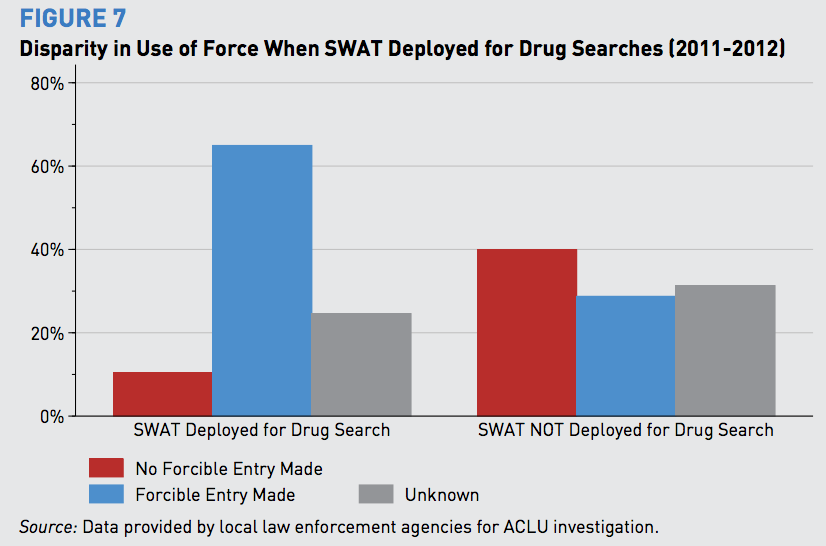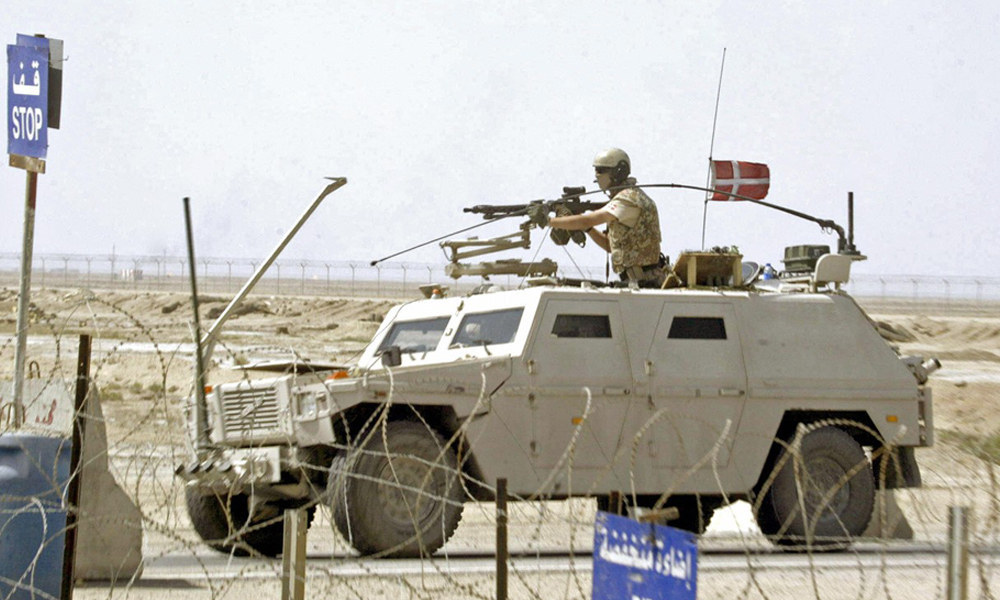
As chaos has engulfed Ferguson, Mo., each night since Michael Brown was killed, one recurring image has dominated the story: that of police clad in armor, carrying military-style weaponry.
The highly militarized police response to the protests in Ferguson has been widely observed — and widely criticized. Writing for Business Insider, former Marine Paul Szoldra catalogued the military weaponry on display in Ferguson, then observed that "this is not a war zone [...]. This is a city outside of St. Louis where people on both sides are angry." Journalist Glenn Greenwald wrote Thursday that the events in Ferguson are "the destructive by-product of several decades of deliberate militarization of American policing." And soldiers have begun to draw startling comparisons between their own armaments and those of the police.
The police weren't always this militarized. In fact, American cops appearing and acting more like soldiers is a relatively new development.
The first SWAT teams were organized in Los Angeles in the late 1960s as a reaction to the Watts Riots, but militarization took a great leap forward in 1990, when Congress passed the National Defense Authorization Act (NDAA). The act allowed the military to transfer excess gear from the Department of Defense to local police agencies for "counter-drug activities." A few years later, the ball that began rolling with the NDAA became the 1033 program.
The program gives local police departments access to military-grade equipment like M16 rifles, military aircraft, and Mine Resistant Ambush Protected (MRAP) vehicles.
The Ferguson police participated in the 1033 program.
Michelle McCaskill, a spokeswoman for the Defense Logistics Agency, told USA Today earlier this week the Ferguson Police Department had participated in the 1033 program. Most recently, police in the St. Louis suburb received two vehicles, a trailer, and a generator in November from the Department of Defense.
Other St. Louis area police agencies have participated as well, though a spokesman for the Missouri Department of Public Safety told Newsweek the heavy black vehicle seen in numerous photos near scenes of violence did not come from the program.
The Ferguson police aren't alone. In fact, the program turned over nearly half a billion dollars worth of military gear to thousands of police departments in 2013 alone.
According to the Defense Logistics Agency, "more than 8,000" law enforcement agencies participate in the program, which has also distributed $4.3 billion worth of gear since it began.
Many states, including Missouri, have online systems to facilitate participation in the program.
According to a recent study on militarized policing, SWAT deployments tended to result in more use of force. The study also found that SWAT teams overwhelmingly impact minorities.
The study — conducted by the American Civil Liberties Union and released in June — paints a dire picture of militarized policing in the United States. It argues that militarization encourages police officers to adopt a "warrior mentality," then chronicles numerous cases in which SWAT depolyments have killed and injured innocent bystanders. The study further found that "there is almost no oversight of SWAT at the state or local level." Federal oversight also is lacking, the report adds.


The report echoes some of the concerns raised last year in the Wall Street Journal by Radley Balko, author of Rise of the Warrior Cop. Balko also noted that SWAT teams in smaller cities have proliferated. Last year the Associated Press also reported on the lack of restraint in the military giveaway program.
The growing militarization of police forces may "doom community policing," according to the Department of Justice.
In a report from 2013, the Justice Department raised concerns about SWAT teams, as well as other military-style uniforms and training. The report decries the "us versus them" mentality that these developments have created in American police forces.
Observers of the chaos in Ferguson this week seemed to agree. Attorney General Eric Holder said Thursday in a statement that the Department of Justice would offer assistance so local police didn't have to rely "on unnecessarily extreme displays of force." He also expressed concern over "the deployment of military equipment and vehicles."
Kentucky Sen. Rand Paul went even further, responding to Ferguson in Time by saying that police militarization makes it "almost impossible for many Americans not to feel like their government is targeting them."














